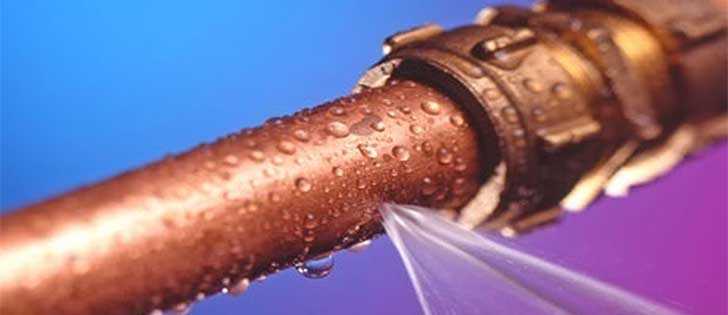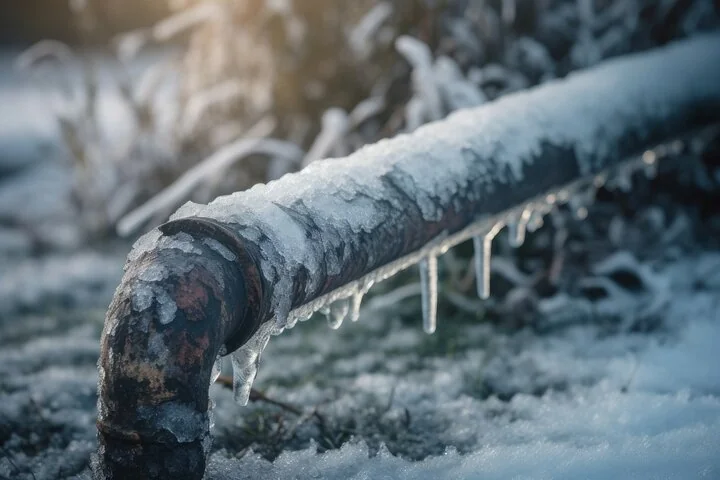What to Do When a Burst Pipe Causes Water Damage in Your Home
What to Do When a Burst Pipe Causes Water Damage in Your Home
Blog Article
Protecting Against Burst Water Lines: Important Tips to Secure Your Plumbing
Protecting against ruptured pipelines is a crucial worry for home owners, particularly throughout cooler months when the threat of freezing is increased. Implementing tactical measures such as correct insulation, regular evaluations, and keeping consistent indoor temperature levels can considerably lower the likelihood of pipe failure. Furthermore, understanding emergency procedures outfits home owners to react quickly to possible plumbing issues. Several are not aware of the details vulnerabilities that their pipes may face. Checking out these susceptabilities can give invaluable insights into protecting your pipes system successfully.
Understand Pipe Vulnerabilities
Comprehending pipeline susceptabilities is essential for efficient plumbing maintenance and preventing pricey damage. Numerous variables contribute to the sensitivity of pipes to ruptureds, including product structure, age, and ecological conditions. Older pipelines, particularly those made from galvanized steel or polybutylene, typically break down gradually, causing increased risk of leakages and ruptures.
Temperature fluctuations can likewise significantly influence pipe honesty. In chillier environments, water caught in pipelines can ice up, broadening and applying pressure on the pipeline walls, which may eventually bring about a burst. Furthermore, high water pressure can stress pipelines, specifically at bends and joints, heightening the possibility of failure.

Insulate Piping Properly
Correct insulation of pipelines is important for protecting against cold and subsequent ruptureds during chilly weather condition (burst pipe). Shielding your pipes system efficiently safeguards versus temperature drops that can lead to expensive damage. Begin by recognizing vulnerable areas where pipelines are exposed to outdoor temperatures, such as cellars, attic rooms, and outside wall surfaces
Use foam pipeline insulation sleeves or wrap insulation tape around these areas to provide a safety obstacle. Guarantee that all sections of the pipes, especially those with restricted warm direct exposure, obtain adequate insulation. Pay unique interest to joints and fittings, as these are a lot more prone to freezing.
When shielding, it's necessary to pick materials that meet local building codes and are ideal for the details setting. Fiberglass insulation is usually advised for its thermal resistance homes. In addition, consider utilizing heat cable televisions or tape in extreme problems, which can be plugged in to offer additional heat
On a regular basis examine insulated pipelines for any type of signs of wear or damage, as compromised insulation can reduce its efficiency. By taking these proactive procedures, you considerably minimize the threat of pipe bursts, guaranteeing a trusted pipes system throughout the winter months.
Maintain Consistent Temperature Level
A stable indoor learn the facts here now temperature level is essential for avoiding burst pipes during the freezing months. When temperature levels drop, water within pipes can freeze, increasing and creating pressure that may inevitably cause the pipes to ruptured.Making use of a programmable thermostat can help manage interior temperature levels effectively, making certain that rooms with pipes stay cozy also when the home is vacant.
This small flow of water can prevent cold by minimizing pressure within the pipes. By carrying out these techniques, property owners can dramatically decrease the threat of pipeline bursts and protect their pipes systems versus the extreme winter season components.
Frequently Examine Pipes
Normal inspections of pipes systems are vital for stopping burst pipelines and preserving general home stability. Regular checks permit house owners to recognize prospective problems before they rise into expensive repair work or major water damages. During these inspections, it is important to check out visible pipes for indicators of deterioration, leakages, or put on. Pay special focus to locations susceptible to cold, such as basements, attics, and exterior walls.
Furthermore, inspecting joints and links is crucial, as these factors are typically prone to leaks. Home owners ought to also assess water stress levels, as extreme pressure can stress the pipes system and boost the threat of pipe ruptureds.
Consider organizing professional plumbing evaluations a minimum of annually, specifically prior to wintertime, to ensure your system is prepared for chillier temperatures. Regular examinations not only assist in identifying instant problems but likewise foster long-lasting maintenance methods that can enhance the life-span of your plumbing system. By being proactive in your strategy, you can secure your home versus the disruptive and pricey repercussions of ruptured pipelines. Focusing on pipes assessments is a financial investment in your home's health and wellness.
Know Emergency Procedures
Understanding emergency treatments is important for every homeowner, specifically after conducting normal plumbing evaluations. Being prepared for a pipes emergency can significantly reduce damage and save prices.
Following, maintain important devices useful. A pipes emergency set need to include a wrench, bettor, and towels, as well as a flashlight and a pail for tiny leaks. In addition, consider having the contact info for a trusted plumbing professional easily offered, should the circumstance rise beyond your control.
If you detect a leakage or ruptured pipe, immediately transform off the water system and notify your plumbing professional. Document the damages with photographs for insurance functions. Understand the indicators of potential plumbing problems, such as unusual water stress variations or damp spots on walls
Eventually, click site positive expertise and quick activity are vital in taking care of pipes emergency situations, ensuring your home remains safeguarded and minimizing potential damage.

Final Thought
Finally, avoiding ruptured pipes necessitates a multifaceted approach that includes understanding pipe vulnerabilities, proper insulation, maintaining regular interior temperature levels, routine evaluations, and knowledge of emergency situation treatments. By implementing these vital techniques, the danger of pipes failures can be considerably minimized, therefore guaranteeing the durability and efficiency of the pipes system. Aggressive actions not only protect versus potential damage yet also add to general water preservation and the defense of property.
In chillier environments, water trapped in pipes can ice up, expanding and applying pressure on the pipeline walls, which may inevitably lead to a ruptured. When temperatures decline, water within pipes can freeze, creating and expanding pressure that might inevitably cause the pipelines to burst. By applying these strategies, home owners can dramatically decrease the threat of pipe bursts and secure their pipes systems versus the extreme winter months go right here elements.

Report this page